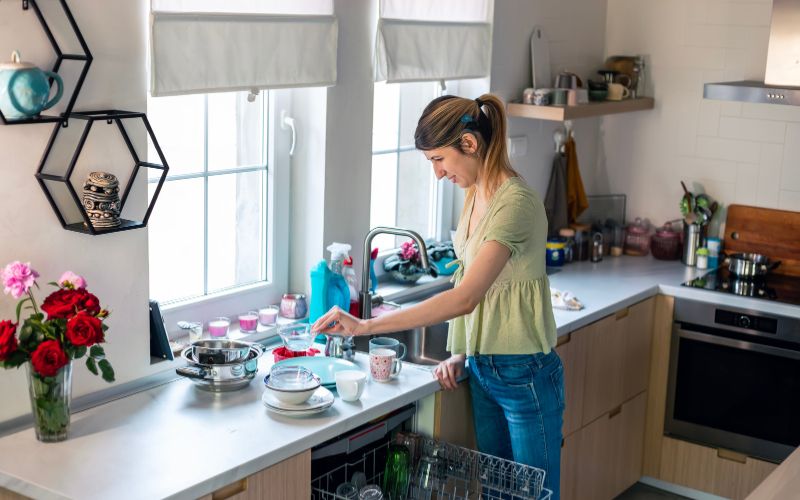hands down the best

AI to help people with disability
AI is also playing a role in making the world more inclusive and easier to navigate for people with disability.
Latest Posts
Follow Us
Home and living supports

NDIS Individualised Living Options (ILO): Home and living supports.
Key points.
- Under the NDIS, Individualised Living Options (ILO) cover supports you need to live independently at home
- It is for people over 18 who need help at home for at least six hours a day
- ILO can help you find somewhere to live as well as fund personal care, setting up and managing your home.
Having a place to live where you feel safe, comfortable and “at home” is important to all of us. Home should be a place where you can be yourself, make choices that are right for you and have control over your day-to-day activities.
NDIS Individualised Living Options (ILO) may be able to help you design a living situation that meets your needs in a home of your choice.
What are Individualised Living Options?
Individualised Living Options (ILO) cover the supports you need to live independently at home. ILO consider each individual’s preferences, strengths, support requirements, informal and community supports.
If you’re eligible, you can get help to live in the home of your choice – on your own, with family, friends or a host.
Individualised Living Options are designed for people on the NDIS aged 18 or over who need help at home for at least six hours a day (formal or informal), are ready to explore options for home and living and are prepared to invest time and effort in creating a future home. It’s also helpful if you have family or friends willing to assist.
Top tip: The NDIS will not fund the cost of a house (except in very limited circumstances). In most cases you have to find a home yourself – a private rental, a house you own or social housing.
Benefits of Individualised Living Options.
- Choose where you live and who you live with
- Live alone or with family or friends
- Get NDIS support whether you rent, have a mortgage or own your property
- Access more stable and consistent supports
- Improved capacity building options.
What types of situations do ILO support?
Individualised Living Options may be ideal for you if:
- You’re considering moving out of home for the first time
- You live in a home that is inappropriate for your needs, overcrowded, requires repairs or where the rent is unaffordable
- You already live in a home that meets your needs but you want to explore other options
- You are at risk due to your current living situation
- You’re leaving care, child protection or a custodial setting
- You plan to change your living arrangements in the next few years
- You need help to create the right home living set up for your needs.
These are just some examples. Most people with ILO share a home with family, friends or other people with NDIS Plans.
Indivudualised Living Options are not group homes, placements or shared accommodation services. They don’t cover 1:1 programs of rostered care. These are more likely to be provided via Supported Independent Living funding.
What supports can ILO include?
- Helping you decide where to live and what you need to make this happen
- Help to set up and manage your home
- Personal care
- Support workers to assist with any in-home support needs such as personal care, shopping, cooking or paying bills
- Capacity building to help you become more independent
- Connecting with other people
- Help with daily decisions
- Support to manage emotions or behaviour
- Training for people who support you
- Unpaid volunteers who can help regularly. (Source: NDIS)
Things ILO won’t pay for.
- Rent or mortgage payments
- Everyday household expenses that everyone has to pay for including food, phone and electricity bills
- Activities outside the home such as work and study
- Recreation and social activities
- Supported Independent Living or Specialist Disability Accommodation
- Supports provided in another way in your NDIS Plan. For example, assistive technology.
- Things that informal supports, such as family and friends, can provide
- Home modifications
- Supports not provided in your home, such as work, study or community activities. (Source: NDIS)
The two stages of NDIS Individualised Living Options.
Individualised Living Options are funded in two stages. The first step is to talk to your local area coordinator (LAC) or planner about exploring your home and living options. You can do this at any time.
You’ll need to complete a Home and Living Supports Request and request a plan reassessment. The NDIS will assess the request and add Stage 1 ILO supports to your plan if you’re eligible.
Stage 1: Exploration and design.
This stage is all about determining which supports are suitable for you and the steps needed to provide them. It’s called “Individualised Living Options – Exploration and Design” in the NDIS Price Guide. Price limits apply.
The exploration and design stage covers:
- Exploring your vision for your future home and the options you have
- Assistance to locate suitable housing or link you with other funded, community or mainstream services
- Working out who to live with and what support you need
- Determining who you want to provide that support
- Assess any risks and consider safety and security.
To complete this stage, you can get help from a family member, friend, peer, support coordinator, or capacity building organisation. Stage 1 must be completed before Stage 2 can be added to your plan.
At the end of this process, your provider will create a “Service Proposal” that tells the NDIS how you want to live, who will support you (paid and unpaid) and how much paid supports will cost. The NDIS will then determine how much support you need.
Stage 2: Putting your supports in place.
If the NDIS considers ILO reasonable and necessary for your needs, the funding will be included under “Individualised Living Options – Support model” in your NDIS Plan.
Your plan will include two different types of ILO supports:
- Primary supports such as personal care, cooking, cleaning and getting ready for work
- Supplementary (additional) supports that can be used flexibly. For example, “drop-in” support or unpaid help from a neighbour or volunteer.
Once the funding for Stage 2 is included in your plan, you can start to pay for the supports mentioned in your Service Proposal straight away.
ILO funding includes resources to monitor whether ILO supports work for you and redesign if your support needs change. A review is not usually required to make changes.
How much NDIS funding is available for ILO?
The amount of funding you receive depends on your individual needs and circumstances. See the NDIS ILO Operational Guideline for details.
Stage 1 ILO funding.
- Up to 30 hours if you know what help you need, will live close to where you are now, the type of home you want is available and you can make your own decisions.
- Up to 50 hours if you’re unsure what help you need, want to move to a different area, need help to find a home and are not sure who to involve.
- Up to 100 hours if you need complex help, want to move to a different type of area, have many people involved in decision-making, and may have trouble finding somewhere affordable.
Stage 2 ILO funding.
Funding is divided into three levels, with the amount depending on the primary, direct and supplementary supports required. The amounts are a guide only. Supports are designed based on your individual needs and situation.
- Level 1 up to $105,000 per year: where you’re sharing with a person who provides companionship and some casual, direct support; supplementary support from family, friends or community members is also available.
- Level 2 up to $150,000 per year: where you’re sharing with a person who provides companionship and more direct regular support and you have more structured supplementary support.
- Level 3 up to $230,000 per year: where primary support involves companionship and sustained support. Direct support involves physical assistance and personal care, direct supervision with household tasks and help with supporting behaviour. You are more likely to obtain Level 3 funding if you have a physical disability or need disability-related health supports.
The actual funding received depends on what’s reasonable and necessary for you.
ILO and the new PACE system.
Individualised Living Options are a Core support in your NDIS Plan. The way they work within your plan depends whether you’re on an original/legacy plan or a new PACE plan.
For people on original/legacy NDIS plans, ILO are funded from your Core > Assistance with daily life budget.
For people on PACE plans, ILO are funded from a new category called Core > Home and living. ILO are now stated supports which means you can only fund them if they are stated in your plan.
Individual Living Options versus Supported Independent Living.
Both ILO and Supported Independent Living (SIL) can help you live more independently at home. ILO are an alternative to Supported Independent Living, which usually takes place in a shared living arrangement. You cannot receive funding for both ILO and SIL in an NDIS Plan.
- ILO are best suited for: people who live with their parents, with family/flatmates or alone, in a rented property, or their own home. ILO can be provided in many different settings. There are more choices with ILO and lots more flexibility. ILO are unlikely to be suitable for people who are under 18, need 24-hour rostered support, registered nursing care or frequent support overnight.
- SIL is best suited for: people with high support needs, including those who require 24/7 care. SIL is generally provided in a group setting.
How to get home and living supports.
If you think home and living supports such as ILO may work for you, talk to your Local Area Coordinator (LAC) or NDIS Planner about including home and living goals in your NDIS Plan.
Alternatively, you can complete a Home and Living Supports Request to begin the process without using a planner or LAC.
The NDIS will review your goals, the reason for your request, current living arrangements and the types of supports that will help you meet your goals.
HDTB can help.
If you think Individualised Living Options may be right for you, it’s a good idea to have plan management included in your NDIS Plan.
Ask your Support Coordinator to help get the process started.



